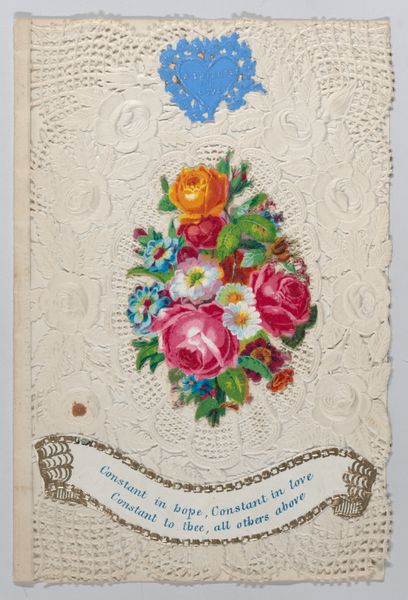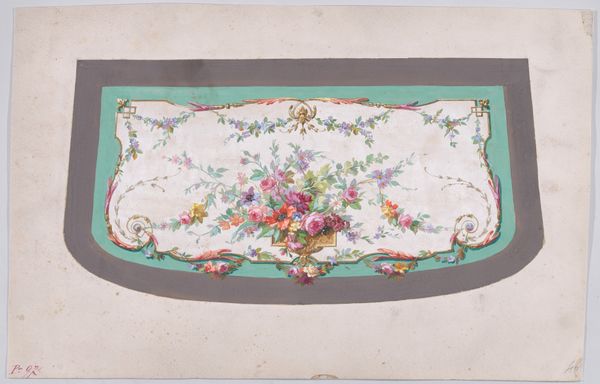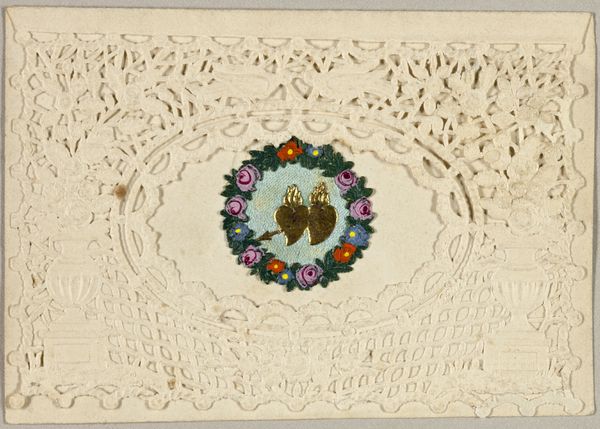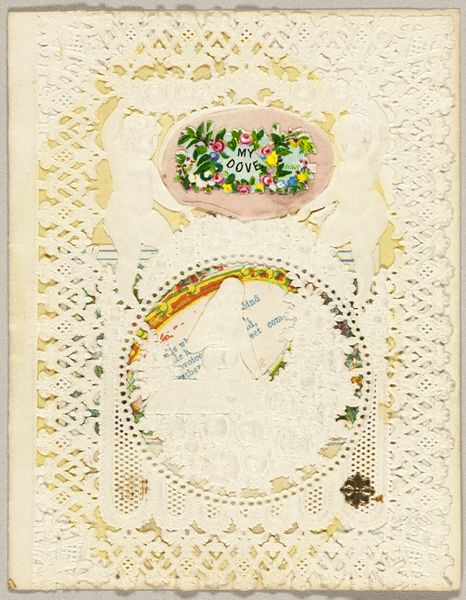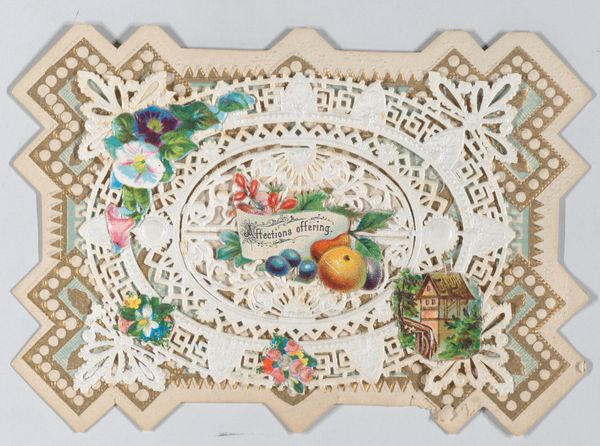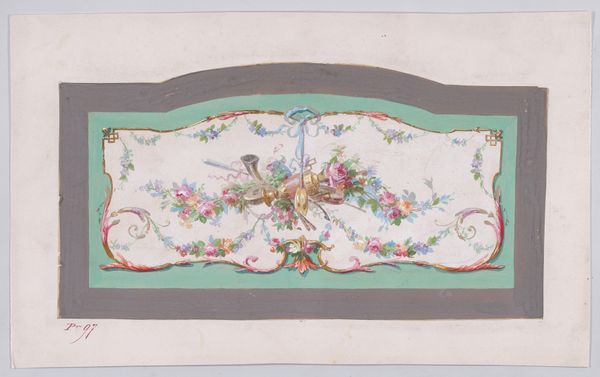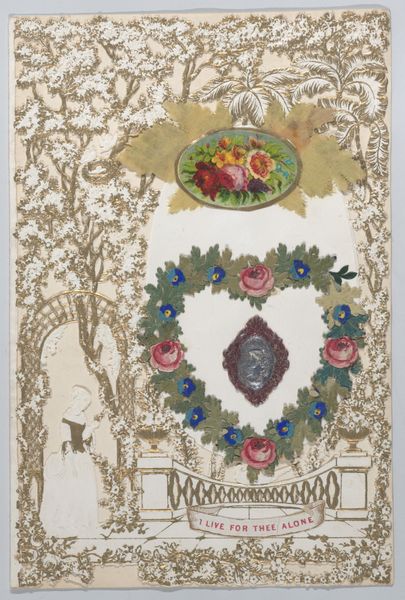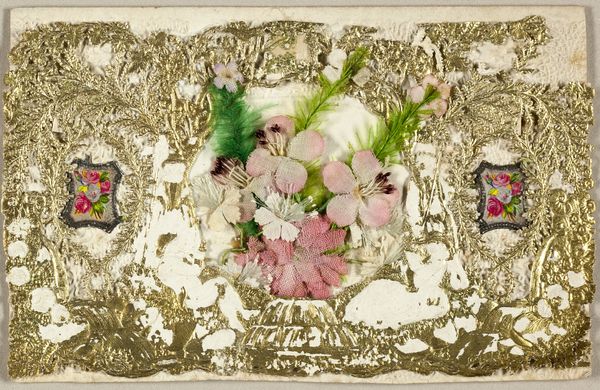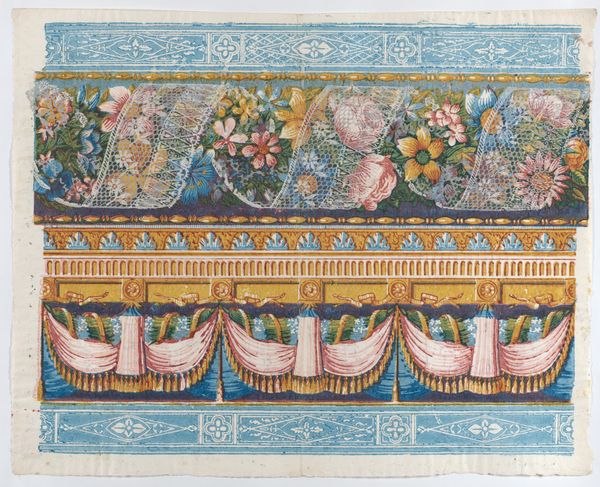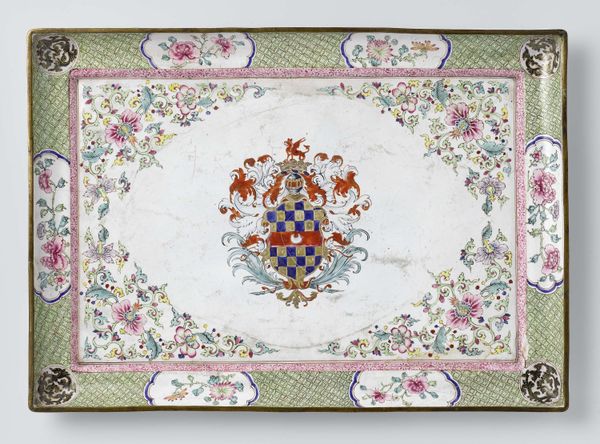
Dimensions: Width: 3 3/8 in. (8.5 cm) Length: 4 15/16 in. (12.5 cm)
Copyright: Public Domain
Curator: Allow me to introduce an exquisite, yet humble, piece from the Metropolitan Museum of Art: an anonymous watercolor and print simply titled "Valentine," created around 1880. Editor: My immediate reaction is one of delicate melancholy. The muted tones and intricate lace create a feeling of a love both cherished and perhaps, slightly faded, or even inaccessible. Curator: Indeed. Note how the hand, gracefully adorned, extends an inscription reading, "Wherever you may chance to be, Always kindly Remember me". This introduces elements of ephemerality, but also the formal trope of love's plea. The hand is rendered with a classical, almost academic precision, contrasted with the soft impressionistic brushstrokes on the flowers. Editor: I'm interested in what "Remember me" signifies during the late 19th century. While seemingly personal, were Victorian ideals about gender roles restricting, limiting the emotional depth allowed for women? Is it a cry for individual recognition within socially constrained avenues of expression? Or simply a reflection of socially codified sentimental gestures between members of a specific social class? Curator: Certainly the piece evokes certain romantic associations. But the design elements contribute further nuance, such as how the lace, meticulously replicated in the printmaking, serves less as adornment and more as a patterned frame for this central request, directing one's attention, offering a play between positive and negative space to define the image and draw it forward. Editor: Perhaps the hand—feminine and adorned with the bracelet—symbolizes limited agency of expression within Victorian courtship and emotional displays? Its pale complexion highlights how expectations of middle and upper-class women, confined to the domestic space, contributed to standards of beauty based in their socioeconomic position and the expectation of the separation of spheres, between male and female arenas for self-expression. Curator: An interesting reading. I would also point to the color palette and their specific placements. The subtle integration of pastel watercolors adds a visual language enhancing the central image, but its delicacy is echoed by the edges of lace adding a balance throughout. Editor: Reflecting on our conversation, it highlights the multilayered nature of objects of affection from any era—simple messages of desire become artifacts reflecting broader political implications. Curator: Yes, examining not only the object’s explicit design, but its nuanced components and delicate interrelations ultimately enables more complex appreciation.
Comments
No comments
Be the first to comment and join the conversation on the ultimate creative platform.
